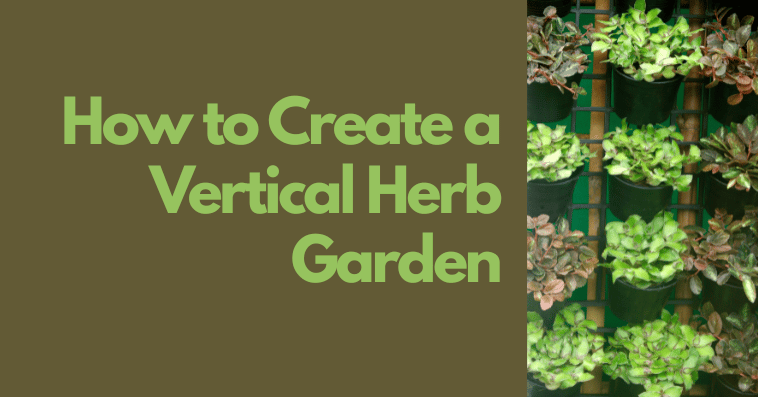Urban gardening is on the rise, and one of the most space-efficient, visually appealing, and practical gardening solutions is the vertical herb garden. Whether you have a small balcony, a kitchen wall, or a compact backyard, a vertical herb garden allows you to grow fresh, organic herbs without taking up much space.
In this blog, we’ll walk you through how to create a vertical herb garden step-by-step, suggest the best herbs to grow, recommend materials and tips, and explain why it’s the perfect addition for both beginners and seasoned gardeners. Plus, we'll help you find where to buy all your gardening essentials at the end!
Why Choose a Vertical Herb Garden?
Before we dive into the process, let’s understand why vertical herb gardens have become a hot trend among urban gardeners:
Space-saving design: Perfect for balconies, patios, or small kitchens.
Easy access: You can snip fresh herbs while cooking right from your kitchen wall.
Aesthetic appeal: Greenery adds charm to any indoor or outdoor space.
Better air circulation: Reduces the risk of pests and diseases.
Low maintenance: Requires less soil and water compared to traditional beds.
Step-by-Step Guide to Creating a Vertical Herb Garden
1. Choose the Right Location
The first step in creating a successful vertical herb garden is location selection. Most herbs require 4-6 hours of direct sunlight daily, so choose a sunny wall, window, balcony railing, or fence.
Tip: South or west-facing walls are ideal for herb growth.
2. Select Your Herbs
Not all herbs thrive in the same conditions, so it’s important to choose varieties that suit your climate and light availability. Here are some popular herbs for vertical gardening:
Basil
Thyme
Mint
Parsley
Coriander (Cilantro)
Chives
Rosemary
Oregano
Pro Tip: Group herbs with similar water and sunlight needs together for efficient care.
3. Choose a Vertical Structure
There are multiple DIY and ready-made vertical gardening systems available:
Hanging pots or planters
Wall-mounted shelves
Pallet gardens
Pocket planters (felt or fabric)
Tiered plant stands
Recycled plastic bottles or wooden crates
Choose a setup based on your aesthetic preference, space, and budget.
4. Select the Right Containers
Use containers that allow good drainage. Plastic, ceramic, or terracotta pots all work well as long as they have drainage holes.
Drainage is key to prevent root rot, especially in vertical setups where excess water might drip downward.
5. Use High-Quality Potting Soil
Use a lightweight, nutrient-rich, well-draining potting mix designed for herbs. Avoid using garden soil, which is heavy and retains excess moisture.
You can also mix in compost or cocopeat to improve fertility and aeration.
6. Plant Your Herbs
Fill the containers with potting mix.
Gently remove herbs from their nursery pots.
Loosen the roots and plant them into the containers.
Press the soil around the base and water lightly.
If starting from seeds, follow the instructions on the packet and be patient—they may take longer to germinate.
7. Arrange and Install
Once your containers are ready, it's time to arrange them vertically. Keep taller herbs like rosemary or oregano toward the bottom and shorter, sun-loving herbs like thyme and chives toward the top.
Ensure that each herb gets enough light, air circulation, and water.
Mount your vertical garden securely with brackets, hooks, or wall-mounting tools.
Tips to Maintain Your Vertical Herb Garden
✅ Watering
Water regularly, especially during hot or dry spells, but avoid overwatering. The vertical arrangement may cause the top pots to dry out faster than the bottom ones.
✅ Fertilizing
Use an organic liquid fertilizer every 3-4 weeks for healthy growth.
✅ Pruning
Frequent harvesting and pruning encourages bushier growth and prevents herbs from flowering too early.
✅ Pest Control
Keep an eye out for aphids, spider mites, and mildew. Use natural remedies like neem oil or soapy water spray to deter pests.
Creative Ideas for Vertical Herb Gardens
If you want to get more creative, try these innovative vertical herb garden ideas:
Repurposed Shoe Organizers: Hang a canvas shoe organizer and fill each pocket with herbs.
Ladder Gardens: Lean a wooden ladder against the wall and place pots on each rung.
Hanging Mason Jars: Attach mason jars to a wooden board with clamps for a rustic kitchen herb wall.
PVC Pipe Gardens: Cut and mount PVC pipes horizontally with holes on top for herbs.
These ideas not only serve functional purposes but also add an aesthetic touch to your space.
Benefits of Growing Herbs Vertically
Fresh Herbs Anytime: Say goodbye to store-bought herbs filled with preservatives.
Reduced Grocery Bills: Fresh basil or mint at your fingertips means fewer grocery runs.
Eco-Friendly Gardening: Use upcycled materials to reduce waste.
Healthier Cooking: Fresh herbs pack more flavor and nutrition than dried ones.
Mental Wellness: Gardening is a proven stress-reliever and mood booster.
Where to Buy Herb Plants and Vertical Gardening Supplies?
Looking to start your own vertical herb garden? PaudheWale is your one-stop destination for:
Healthy, organic herb saplings
Vertical garden structures and planters
Organic potting mix and compost
Gardening tools and accessories
All products are delivered fresh and ready to grow. Whether you’re a beginner or a green thumb, PaudheWale has everything you need to build your dream vertical herb garden.
👉 Start your green journey today – shop now at PaudheWale!

